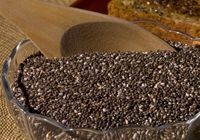 |
Cheap source of quality ornamentals
Many of the plants included in this genus were originally in a genus called Regalia. Neuroglia ampullaceal, a small plant, has leathery, green leaves marked with wide dark bands. The blue and white flowers are hidden deep in the vase. They are good hanging plants.Neuroglia Carolina, sometimes called Nidularium meyendorffii, has foot long leaves that form a flattened rosette. When the plant is about to bloom, the center of the rosette becomes a bright red and provides a contrast for the lavender flowers that appear deep in the rosette.Neuroglia Carolina var. tricolor has pink and cream striped leaves. The entire plant becomes pink just before it blooms.
Neuroglia spectabilis (fingernail plant) has dark green, strap-like leaves banded with silver underneath. The leaf tips are red and resemble painted fingernails. Red bracts highlight the lavender-blue flowers that appear deep in the vase.
Neoregelias are easy to grow both indoors and out. Give them warm temperatures, filtered to shady light, and even moisture with excellent drainage.Neuroglia contains about fifty species and a large number of varieties. Most are from eastern Brazil. Although most neoregelias are terrestrial, some are found on shaded, lower branches of trees. They have been favorites in European collections for over one hundred years.Another remarkable thing about the ornamental farm is that the fellow who is running it is not a horticulturist but one who learned the fine points of ornamental plant propagation through self-study and trial and error. Now, he has mastered a fast way of multiplying the varieties they are producing in large numbers.Bromeliad Neuroglia compact x fireball is a plain looking broom that will surprise you as it nears flowering. The leaves change from plain green to mottled burgundy/red in color. Multiplies quickly and looks great in a hanging basket as pups are away from the plant. Bromeliad Neuroglia Flandreau often produced two flowers within its colorful rosette. When this neuroglia is nearing its flowering stage, the center leaves turn to hot pink. Small bluish/white flowers appear as the flower is mature. Grows well in most conditions and produces pups (smaller plants) readily after it has flowered


